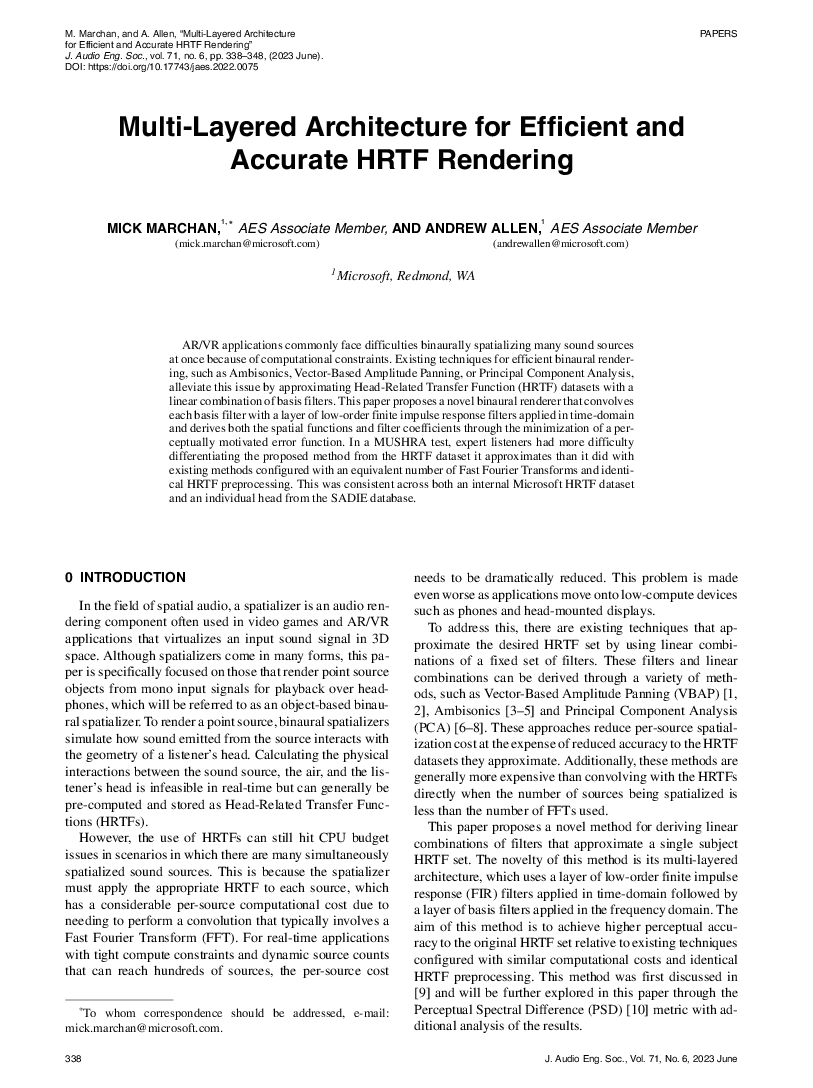Home / Publications / E-library page
You are currently logged in as an
Institutional Subscriber.
If you would like to logout,
please click on the button below.
Home / Publications / E-library page
Only AES members and Institutional Journal Subscribers can download
AR/VR applications commonly face difficulties binaurally spatializing many sound sources at once because of computational constraints. Existing techniques for efficient binaural rendering, such as Ambisonics, Vector-Based Amplitude Panning, or Principal Component Analysis, alleviate this issue by approximating Head-Related Transfer Function (HRTF) datasets with a linear combination of basis filters. This paper proposes a novel binaural renderer that convolves each basis filter with a layer of low-order finite impulse response filters applied in time-domain and derives both the spatial functions and filter coefficients through the minimization of a perceptually motivated error function. In a MUSHRA test, expert listeners had more difficulty differentiating the proposed method from the HRTF dataset it approximates than it did with existing methods configured with an equivalent number of Fast Fourier Transforms and identical HRTF preprocessing. This was consistent across both an internal Microsoft HRTF dataset and an individual head from the SADIE database.
Author (s): Marchan, Mick; Allen, Andrew
Affiliation:
Microsoft, Redmond, WA
(See document for exact affiliation information.)
Publication Date:
2023-06-06
Import into BibTeX
Permalink: https://aes2.org/publications/elibrary-page/?id=22141
(884KB)
Click to purchase paper as a non-member or login as an AES member. If your company or school subscribes to the E-Library then switch to the institutional version. If you are not an AES member Join the AES. If you need to check your member status, login to the Member Portal.

Marchan, Mick; Allen, Andrew; 2023; Multi-Layered Architecture for Efficient and Accurate HRTF Rendering [PDF]; Microsoft, Redmond, WA; Paper ; Available from: https://aes2.org/publications/elibrary-page/?id=22141
Marchan, Mick; Allen, Andrew; Multi-Layered Architecture for Efficient and Accurate HRTF Rendering [PDF]; Microsoft, Redmond, WA; Paper ; 2023 Available: https://aes2.org/publications/elibrary-page/?id=22141